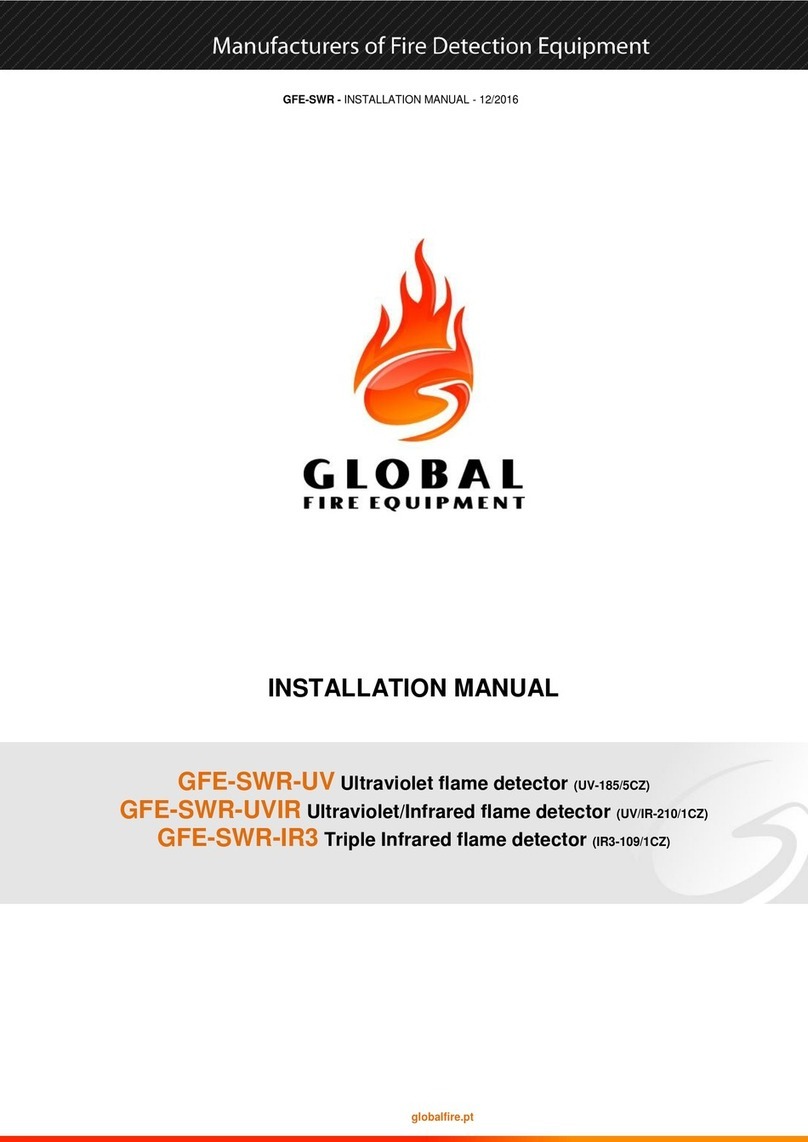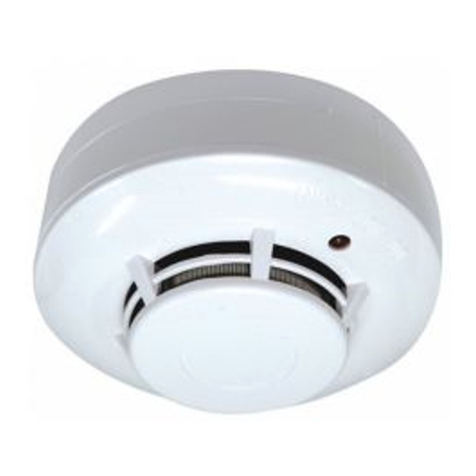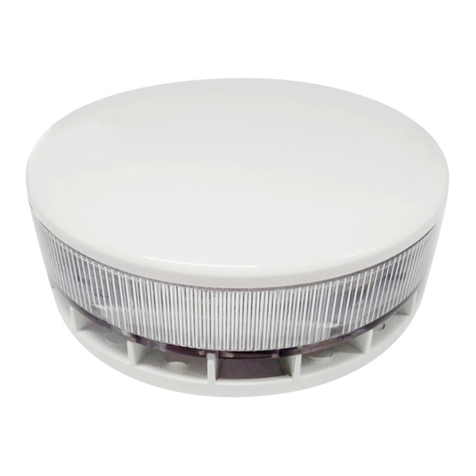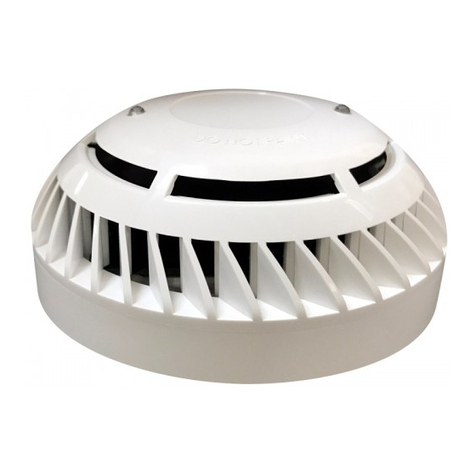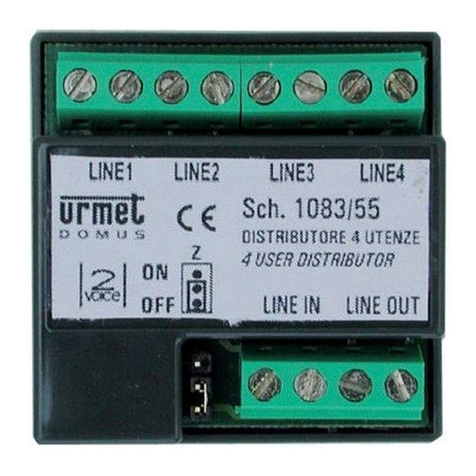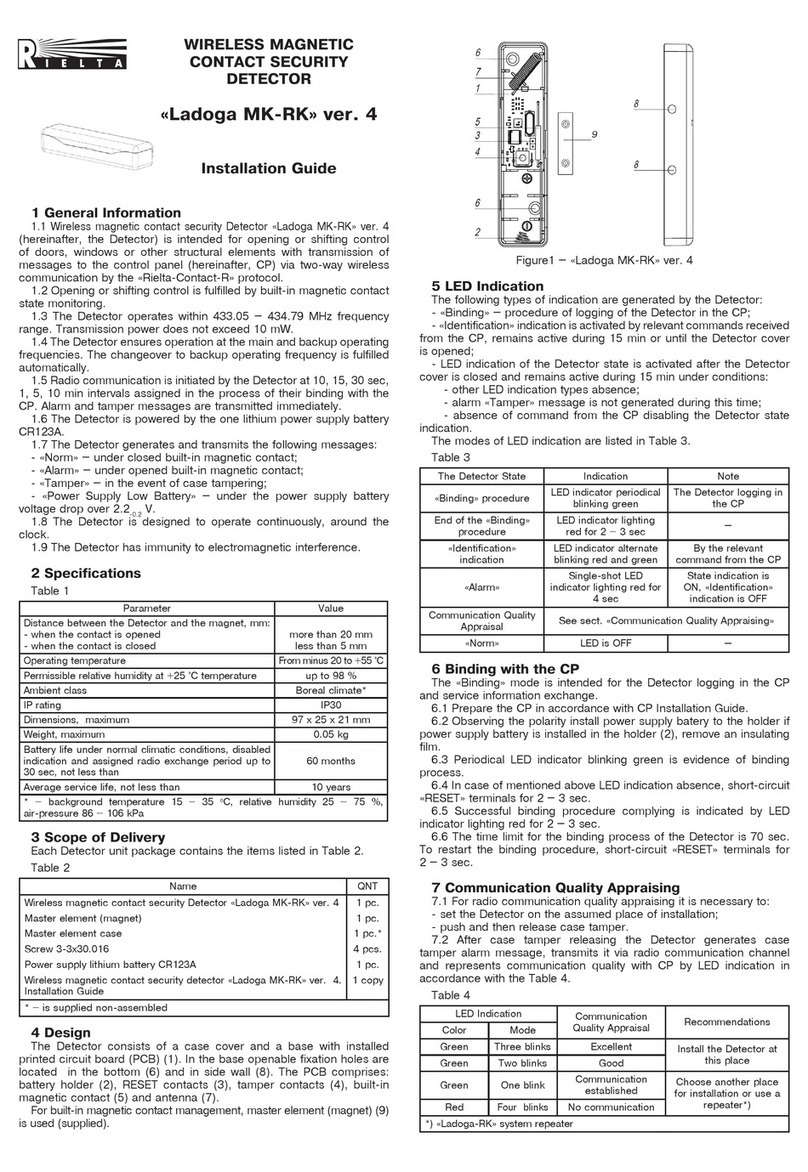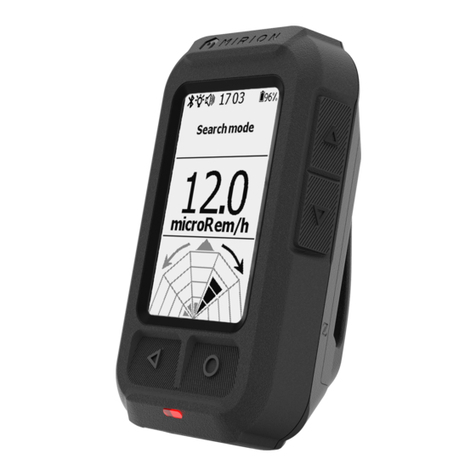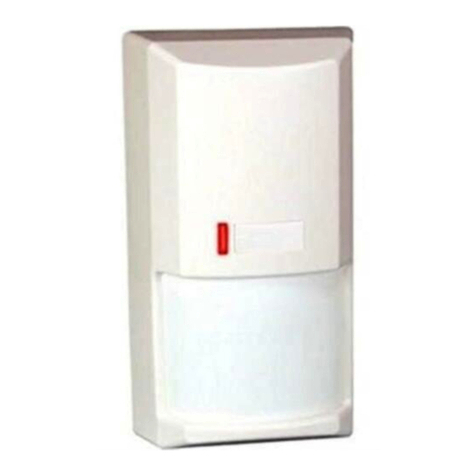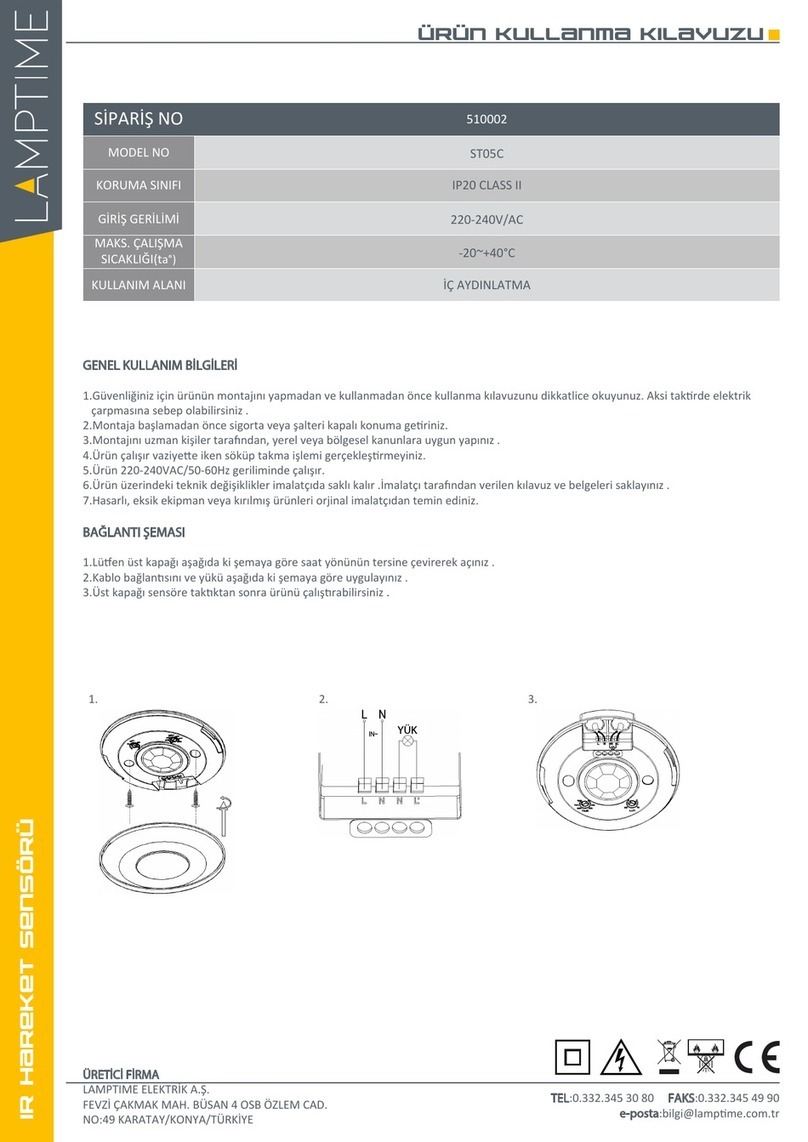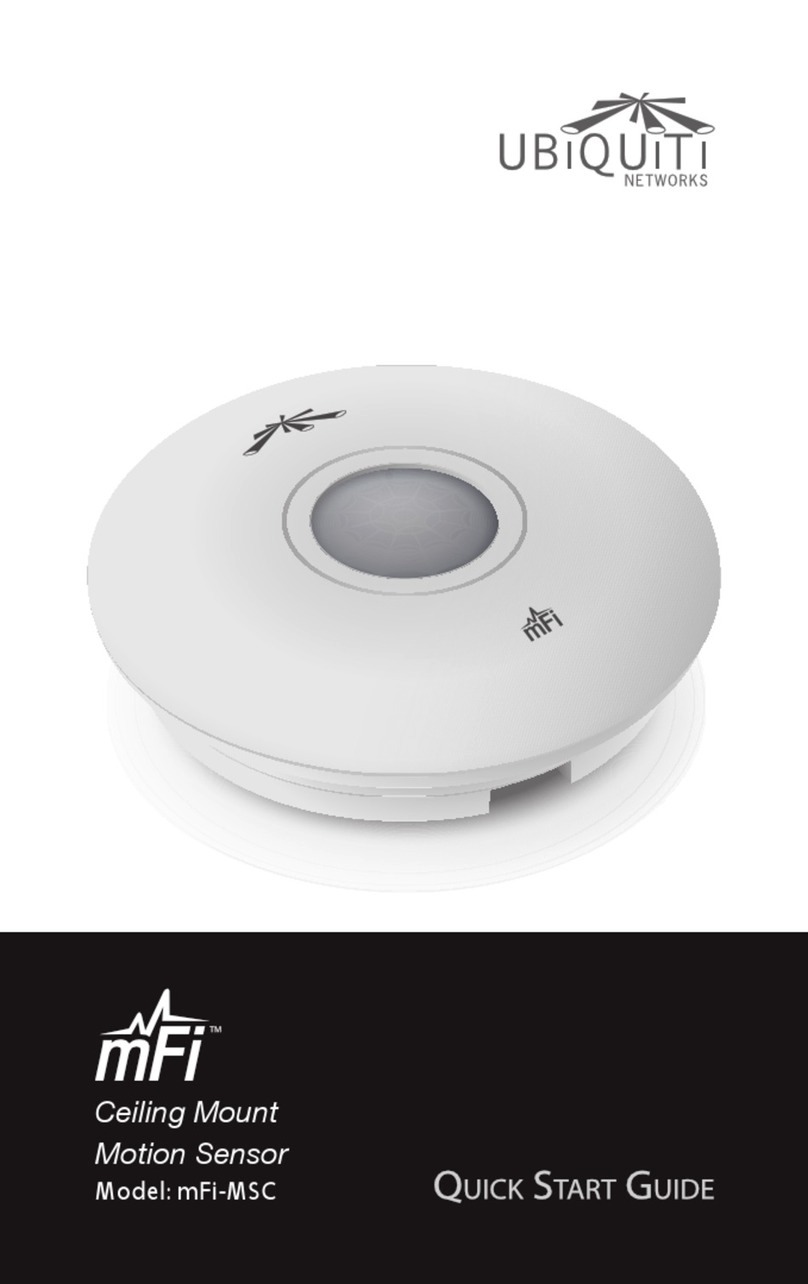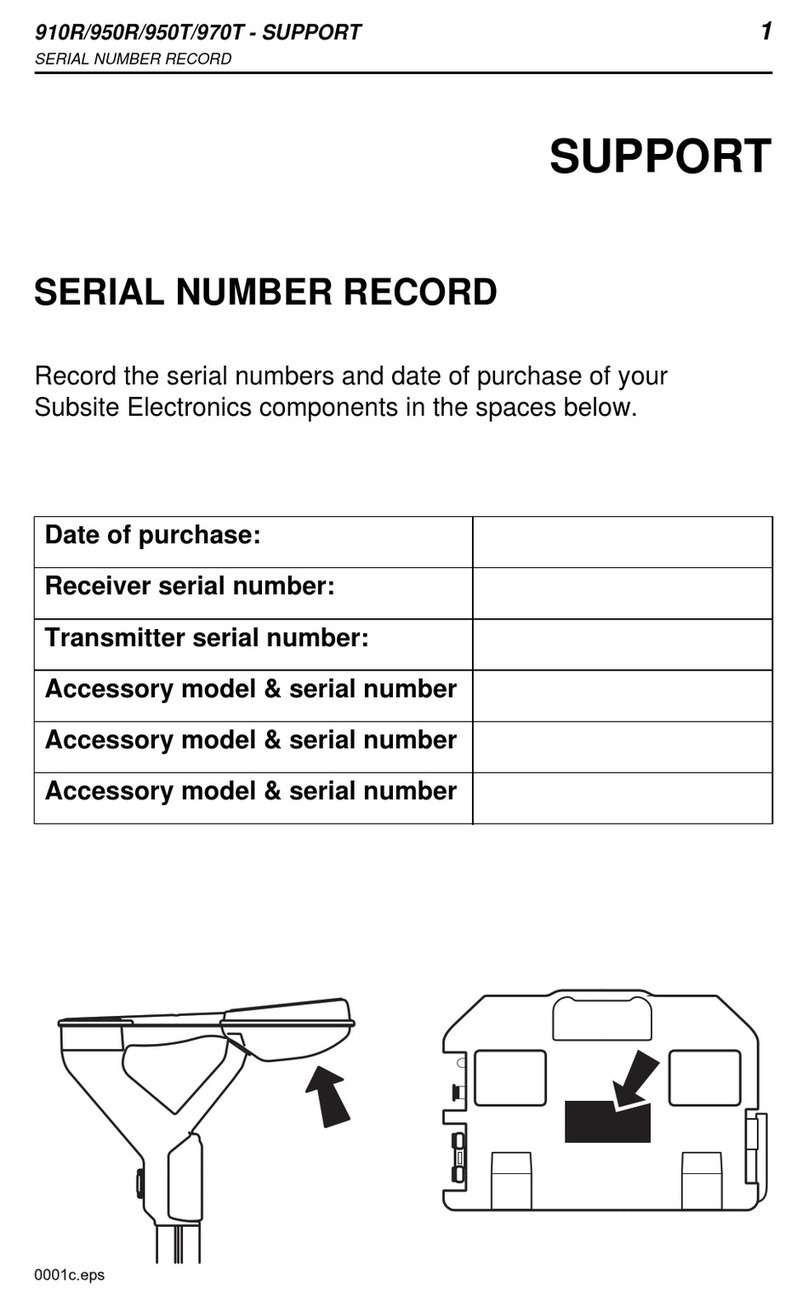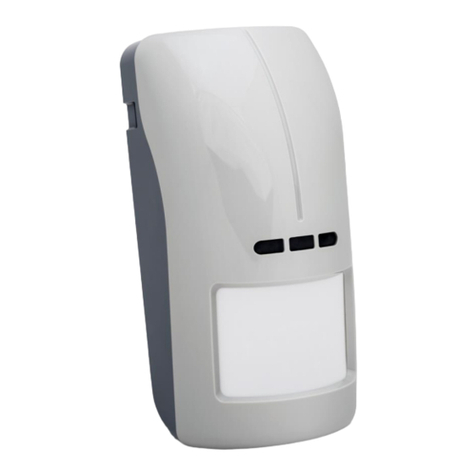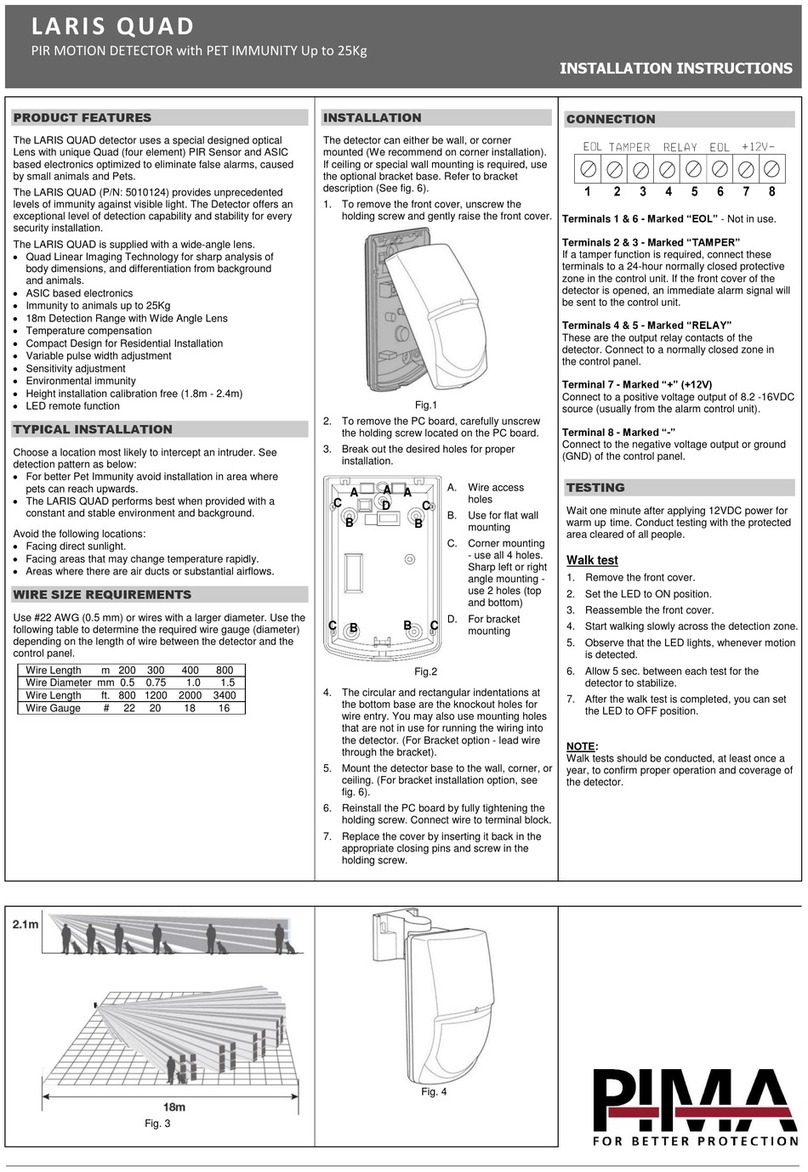GLOBAL FIRE EQUIPMENT S.A.
Sítio dos Barrabés, Armazém Nave Y, Caixa Postal 908-Z, 8150-016 São Brás de Alportel - PORTUGAL | Tel: +351 289 896 560
Email: info@globalfire-equipment.com | Technical Support: techs@globalfire-equipment.com | www.globalfire-equipment.com
INSTALLING THE BASE - To ensure proper fit of the detector head to the base, all wires should be properly dressed at installation by positioning all wires flat against
terminals and fastening the wires away from connector terminals. The detector base can be mounted directly onto most standard electrical junction boxes.
INSTALLING THE HEAD - Align detector components using provided alignment marks on both the head and base. Align detector mark and short alignment mark on
base. Fit the detector head onto the base and twist clockwise to secure it. After all detectors are installed, apply power to the control unit and activate the
detection loop. Test the detectors as described below.
TESTING - All remote signalling systems, releasing devices and extinguishing systems should be disconnected during the test period and reconnected at the
conclusion of testing.
SMOKE: Allow smoke from a cotton wick or test smoke aerosol to enter the detector’s smoke chamber for at least 10 seconds. When sufficient smoke has entered,
the detector will signal an alarm. This will be indicated by the illumination of the 2 Red LEDs provided. Make sure to clear smoke out of the chamber before
resetting in order to keep the detector at its current sensitivity setting.
HEAT: The detector to be tested should be subject to a flow of warm air at a temperature of between 65°C and 80°C. This requirement can be met by some
domestic hair dryers. Switch on the warm airflow and check that the temperature is correct and stable. From a distance of several cms, direct the airflow at the
guard protecting the thermistor. The detector should alarm within 60 seconds. Upon alarm immediately remove the heat source and check that the Red LEDs of the
detector are illuminated. If a detector fails to activate within 60 seconds, confirm connections and programming.If necessary, replace the unit.
NOTE: After testing, check that the system is returned to normal operation.
Notify the appropriate authorities that the testing procedure has been completed and the system is active again.
MAINTENANCE - The recommended minimum requirement for detector maintenance consists of annual cleaning of dust from the detector head using a low power
vacuum cleaner.
DO NOT ATTEMPT TO DISASSEMBLE THE DETECTOR.

